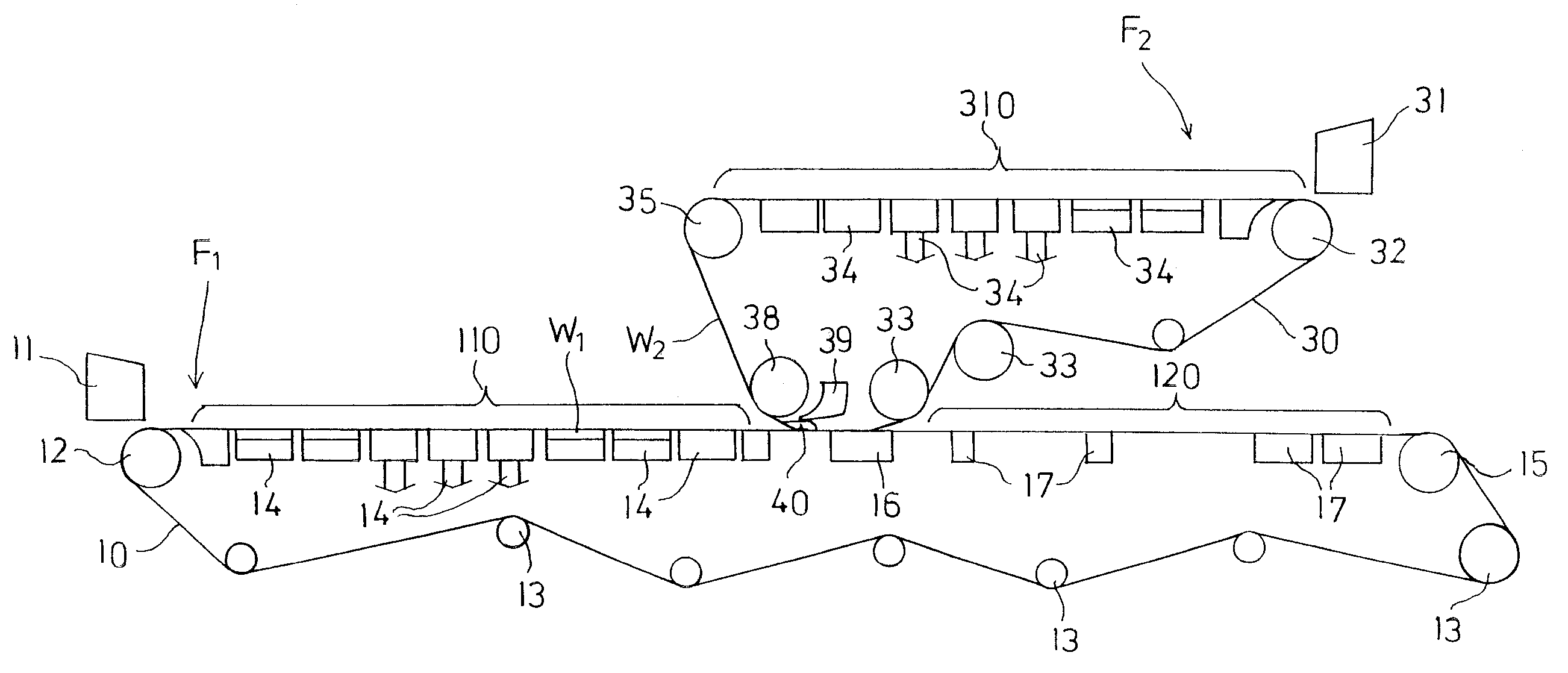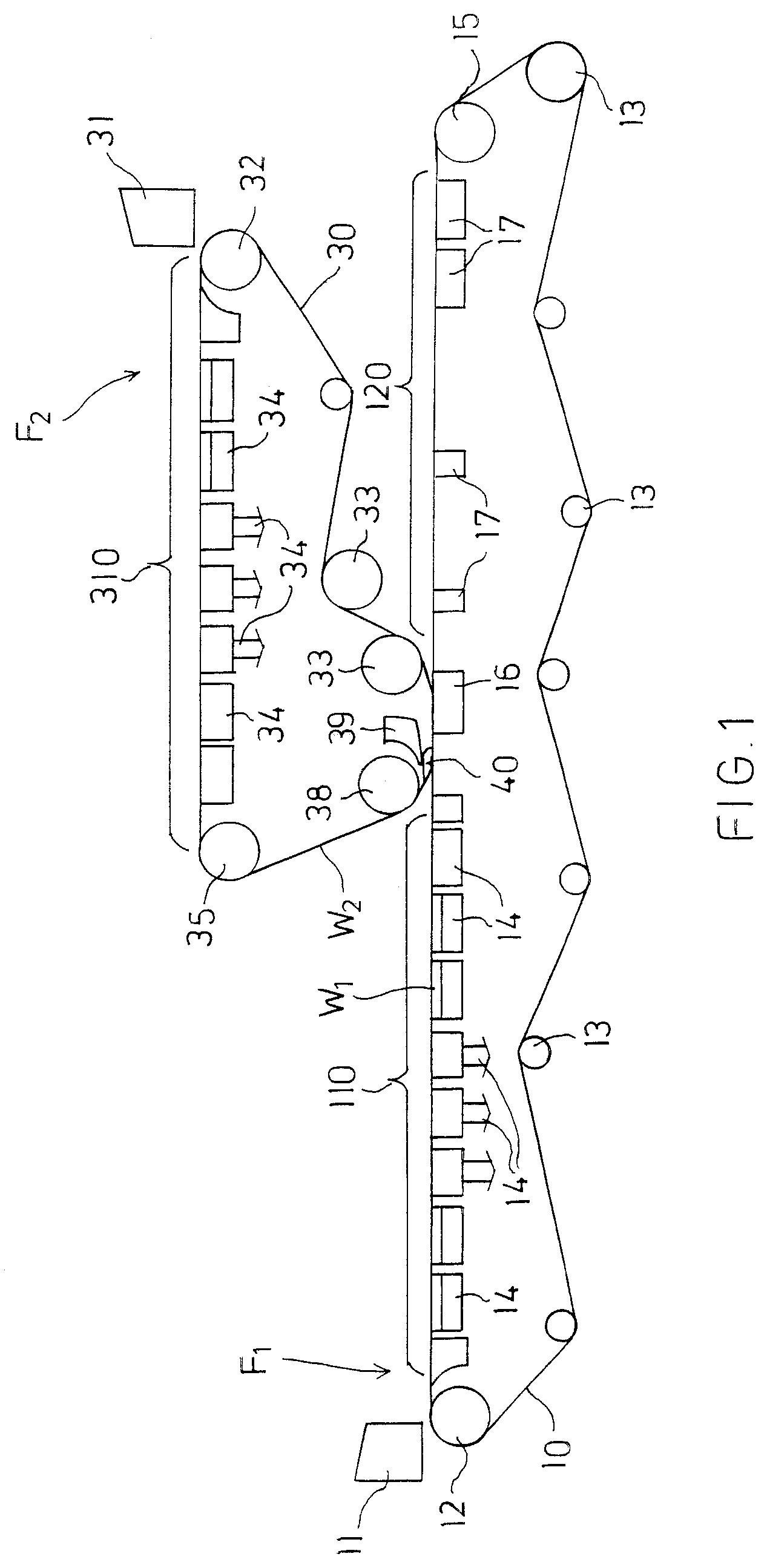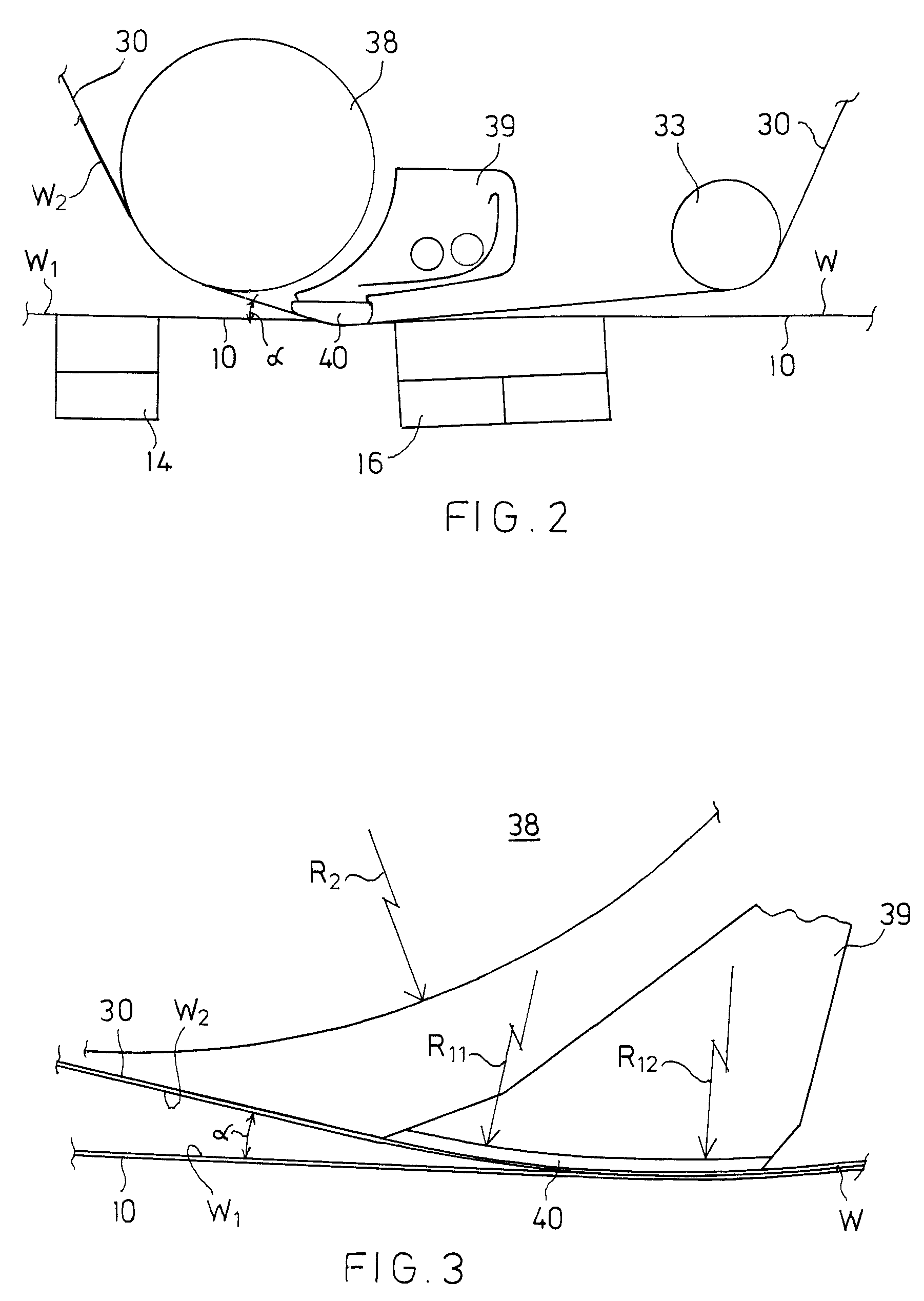Web-forming section and method for manufacturing multi-layer web
a technology of web and web layer, applied in the field of web-forming section, can solve the problems of generating fine washout from the vicinity of web surface, affecting the final use of the product, and affecting the quality of the finished product, so as to reduce the solid content of one or both fiber layers, increase production, and widen the couching stage running window
- Summary
- Abstract
- Description
- Claims
- Application Information
AI Technical Summary
Benefits of technology
Problems solved by technology
Method used
Image
Examples
Embodiment Construction
FIG. 1 schematically shows a web-forming section of a board machine producing a two-layer fiber web. It comprises a first web-forming unit F1 on which a first fiber layer W1 is formed, a second web-forming unit F2 on which a second fiber layer W2 is formed, and means for joining the separately formed fiber layers together.
The first web-forming unit F1 comprises a first headbox 11 and a lower wire 10 which runs substantially horizontally from a breast roll 12 to a turning roll 15 from which it returns back guided by guide rolls 13. Stock suspension is fed from the headbox 11 over the breast roll 12 to the lower wire 10, in a first Fourdrinier wire section 110 of which water is removed from the stock suspension by means of dewatering elements 14 located below the wire 10 for forming the first fiber layer W1. The dewatering elements 14 can be any dewatering elements commonly used on a Fourdrinier wire.
The horizontal portion of the lower wire 10 is divided into three parts which are the...
PUM
| Property | Measurement | Unit |
|---|---|---|
| angle | aaaaa | aaaaa |
| angle | aaaaa | aaaaa |
| incidence angle | aaaaa | aaaaa |
Abstract
Description
Claims
Application Information
 Login to View More
Login to View More - R&D
- Intellectual Property
- Life Sciences
- Materials
- Tech Scout
- Unparalleled Data Quality
- Higher Quality Content
- 60% Fewer Hallucinations
Browse by: Latest US Patents, China's latest patents, Technical Efficacy Thesaurus, Application Domain, Technology Topic, Popular Technical Reports.
© 2025 PatSnap. All rights reserved.Legal|Privacy policy|Modern Slavery Act Transparency Statement|Sitemap|About US| Contact US: help@patsnap.com



